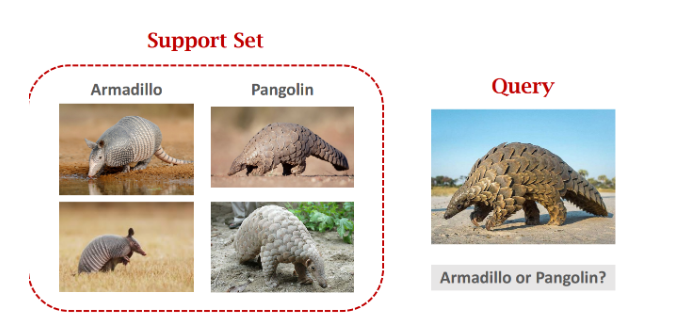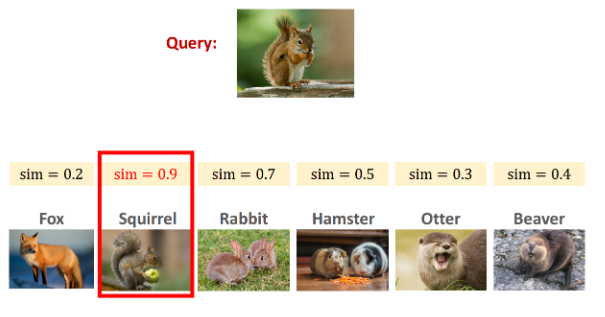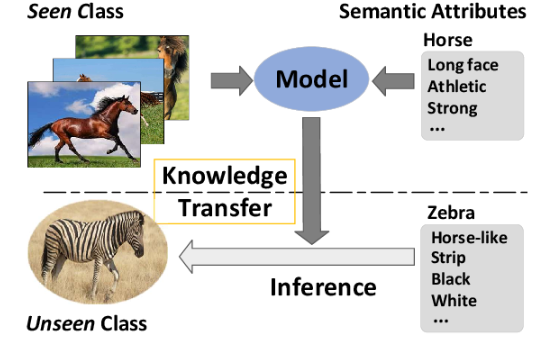This article was published as a part of the Data Science Blogathon.
Introduction
Humans can identify new objects with fewer examples. However, machines would require thousands of samples to identify the objects. Learning from a limited sample would be challenging in machine learning. Having challenges, in recent advances, Machine learning has come up with new concepts to identify data with smaller samples or Zero samples.
In this article, I will explain new concepts in machine learning, namely Few Shot Learning, Zero-Shot Learning, and One Shot Learning which are convenient and relatively simple approaches to implementing image classification and deep learning t
Few Shot Learning
Few-shot learning refers to feeding models with very minimal data, contrary to the practice of feeding large amounts of data. Few shot learning is the best example of a meta-learning shot where it is trained on several related tasks during the meta-training phase, so it can generalize well on unseen data with very few examples.

Importance of Few Shot Learning
- Reducing the data collection, since Few-shot learning requires fewer data to train the model, which in turn reduces cost in data collection and computational cost.
- When there is insufficient data for supervised or unsupervised machine learning tools, often find it challenging to make predictions; in such cases, few-shot learning is very helpful in doing.
- Humans can easily categorize different handwritten characters after seeing a few examples; however, for the machine to identify these
handwritten characters, it needs lots of data to train. Few-shot learning is a test base where computers are expected to learn from a few examples like humans.
- Machines can learn rare diseases by using few-shot learning. They use computer vision models to classify the anomalies with few-shot
learning by using a very small amount of data.
Applications of Few-Shot Learning
- Computer vision – Character Recognition, Image Classification, and Other Image applications like (Image retrieval, gesture recognition) and Video applications.
- Natural Language Processing: Parsing, Translation, Sentiment classification from short reviews, User Intent classification, Text
classification, Sentiment analysis.
- Robotics: Visual Navigation, Continuous Control, Learning manipulation actions from a few demonstrations.
- Audio Processing: Voice conversion across different languages, Voice conversion from one user to another.
- Other: Medical Applications, IoT applications, Mathematical applications, Material Science applications.
One Shot Learning
One Shot learning is a machine learning algorithm that requires very little database to identify or access the similarities between the objects. These are more helpful in deep learning models. In one-shot learning for machine learning algorithms, only one instance or doesn’t require many examples for each category to feed to the model for training, the best examples for One-shot learning are computer vision images and facial recognition.

Importance and Applications of One Shot Learning
1. The goal of one-shot learning is to identify and recognize the features of an object, like how humans can remember and train the system to use prior knowledge to classify new objects
2. One-shot learning is good at identifying computer vision images and facial recognition and passport identification checks where individuals should be accurately classified with different appearances
3. One of the approaches of One Shot learning is Using Siamese networks
4. One-shot learning applications are used in voice cloning, IoT analytics, curve-fitting in mathematics, one-shot drug discovery, and other medical applications.
Zero Shot Learning
Zero-shot learning is a machine learning pattern where a pre-trained deep learning model is made to generalize on a category of samples. The idea behind Zero-shot learning is how humans can naturally find similarities between data classes, in the same way, training the machine to identify.
The main aim of Zero-shot learning is to gain the ability to predict the results without any training samples; the machine has to recognize the objects from classes that are not trained during training. Zero-Shot learning is based on knowledge transfer which is already contained in the instances fed while training.
Zero-Shot learning is proposed to learn intermediate semantic layers and properties, then apply it to predict a new class of unseen data.
For example, let’s say we have seen a horse but never seen a zebra. If someone tells you that a zebra looks like a horse but has black and white stripes, you will probably recognize a zebra when you see it.

Importance and Applications of One Shot Learning
1. Data labeling is a labor-intensive job. It can be used when training data is lacking for a specific class.
2. Zero-shot learning can be deployed in scenarios where the model has to learn new tasks without re-learning previously learned ones.
3. To Improve the generalization ability of a machine learning model.
4. Zero shot could be a more effective way of learning new information than traditional methods, such as learning through trial and error
5. In Image classification and Object Detection, Zero shot is additionally helpful in finding the visuals
6. Zero shot is more supportive in developing several deep work frameworks like Image generation, Image Retrieval
Difference between Few Shot, One Shot, and Zero Shot Learning
- When a small amount of data is available, and with the existing small volume of data only, we need to train the model; in such types of
scenarios, Few shot Learning is very helpful. Few Shot learning can be used in image classification, Facial recognition disciplines
- On the other hand, shot Learning uses very less data when compared with Few shot learning, or it uses only one instance or example of data, not the vast database. One-shot learning is more useful in identifying the image of a person in any identification proof
- When there is no training data available for the machine learning the algorithm still the system has to identify or classify the object, in such scenarios Zero Shot learning generates the best results
Conclusion
Now that we have a fair understanding of Few shot, One shot, Zero shot Learnings, desp having a few drawbacks
The main takeaway is
1) We can use these algorithms where less data is available, and it takes less time to collect huge amounts of data to train models.
2) For deep learning models, Few shot, One shot, and Zero-shot Learnings are the best options to implement.
3) One-shot and earning eliminate training data on billions of images to a model.
4) These learning are widely used in Classification, Regression, and Image recognition.
5) All these techniques are useful in overcoming data scarcity challenges and reducing costs.
The media shown in this article is not owned by Analytics Vidhya and is used at the Author’s discretion.
Related
- SEO Powered Content & PR Distribution. Get Amplified Today.
- Platoblockchain. Web3 Metaverse Intelligence. Knowledge Amplified. Access Here.
- Source: https://www.analyticsvidhya.com/blog/2022/12/know-about-zero-shot-one-shot-and-few-shot-learning/



